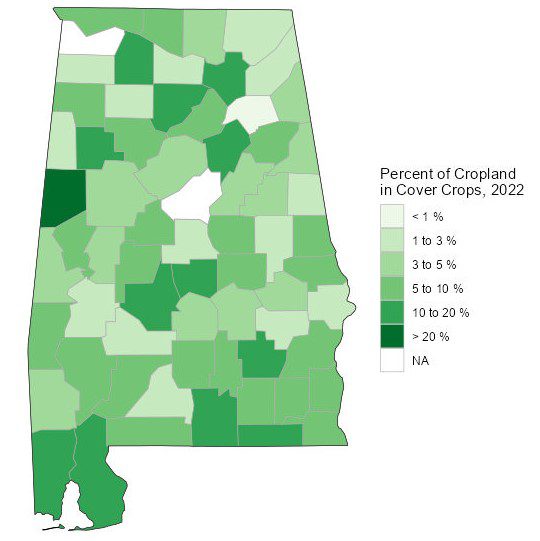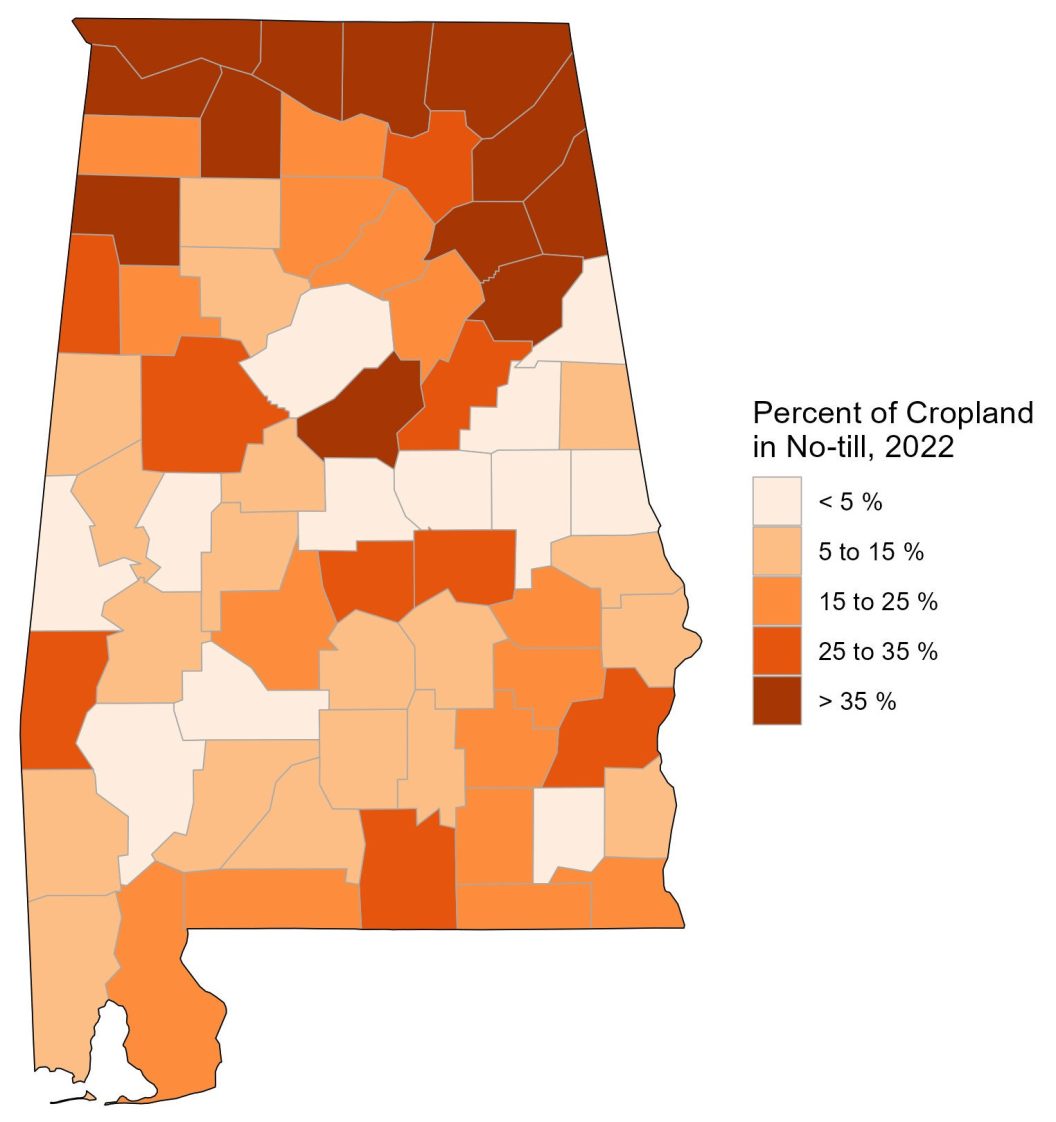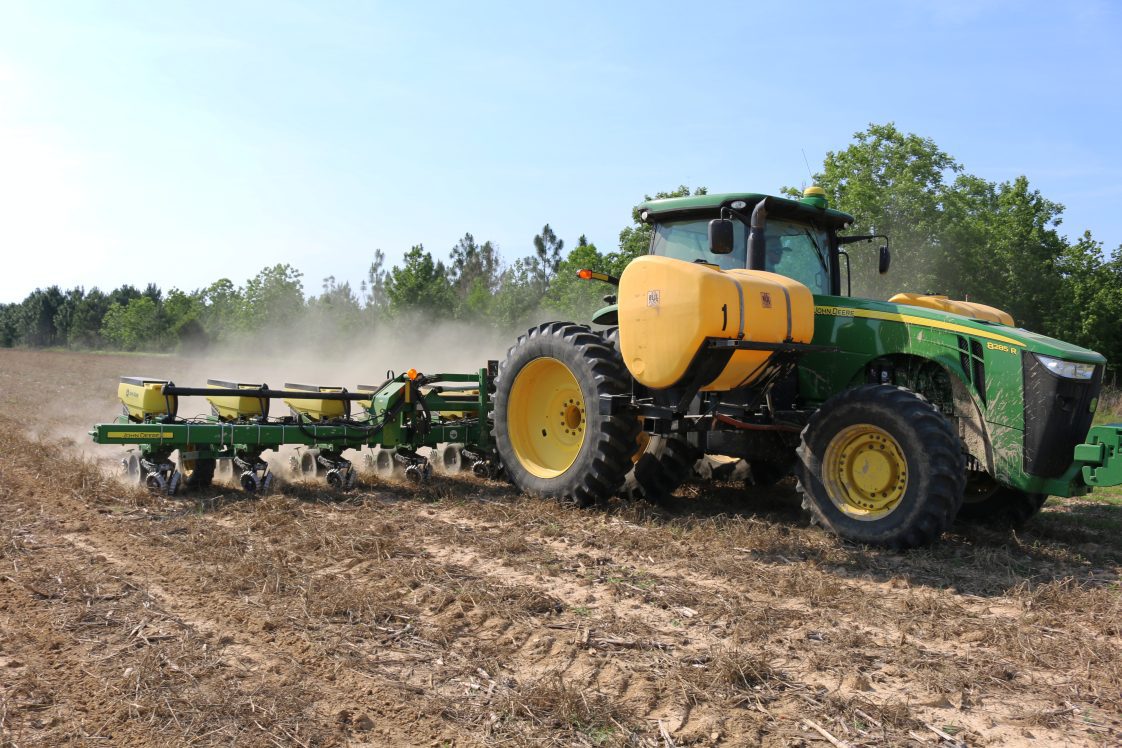Crop Production

Voluntary carbon-market programs continue to draw attention across the United States. Two of the most common practices that farmers use in carbon programs are cover crops and no-till. With the release of the recent 2022 Census of Agriculture, one might wonder how Alabama fared in using these two conservation practices that farmers often use for their on-farm soil health benefits.
Cover Crops

Percentage of Alabama Cropland in Cover Crops, 2022
Cover crops are small grains, legumes, brassicas, or other crops that are planted between cash crops with the primary goal of maintaining year round cover on the land. Farmers use cover crops to reduce erosion, improve soil health, enhance water availability, help control pests, and increase biodiversity. Alabama had cover crops on 7.6% of its cropland as in 2022, which is above the 4.7% rate for the US in total, ranking 18th among states. Maryland maintained its lead with cover crops on 27.3% of its cropland.
In Alabama, Pickens County has the highest rate of adoption with 23.1% of its crop acres having cover crops. Pickens County ranks 71st nationally out of the 2,897 US counties that had data. Rounding out the top five are the following counties:
- Dallas (19.14%)
- Covington (19.13%)
- Fayette (17.97%)
- Baldwin (15.17%)
These counties exemplify the growing recognition of cover crop benefits. At the other end of the spectrum are Etowah, Conecuh, Tallapoosa, Lamar, and Jackson Counties—which all have cover crops on less than 1.5% of their cropland.
No-till
No-till farming is a practice that minimizes soil disturbances. Benefits of no-till include decreased soil erosion, reduced fuel and labor costs, and improved biodiversity. Alabama ranks 19th among US states, utilizing no-till practices on 28.1% of the state’s cropland. Alabama is above the national no-till adoption rate of 26.4%. Maryland also leads the way in no-till use with a rate of 56.3%.
In Alabama, Cherokee County maintained its lead with 67% of cropland being no-till. Cherokee County ranks 84th nationally out of the 2,940 counties with data—showing its commitment to adoption of no-till. The next four counties are the following:
- Lauderdale (63.5%)

Percentage of Alabama Cropland in No-till, 2022
- Madison (57.7%)
- Lawrence (54.5%)
- Colbert (53.9%)
The counties with the lowest use of no-till are Coosa, Sumter, Clarke, Jefferson, and Clay–all of which have no-till on less than 2% of cropland.
More Information
While cover crops and no-till are being used in Alabama at higher rates than the rest of the nation, there is still disparity in adoption rates across Alabama counties. For more information on conservation practices, carbon markets, or other sources of payment for using conservation practices, visit the Healthy Soils webpage. Learn more about ways that Alabama Extension professionals are working to preserve and protect natural resources through the Down to Earth campaign.

